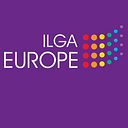The shocking truth about LGBTI asylum seekers living through COVID-19 in Europe
The COVID-19 pandemic and the political responses to it have hit already beleaguered LGBTI asylum seekers in Europe particularly hard. We report on the alarming impact.
“The COVID-19 pandemic has impacted everyone, but not everyone has been impacted has been impacted in the same way,” said moderator Luna Liboni at the opening of the first panel of the ‘COVID-19 and Queer Asylum Symposium’ on April 29. This is particularly true in the case of LGBTIQ persons seeking asylum and refugees in Europe, a community who already faced a double stigma and discrimination in host countries before the health crisis started.
“The EU has been too slow in the context of COVID-19,” said Professor of Law Nuno Ferreira at the symposium. “Queer refugees and asylum seekers have been absent at the debate.”
Across Europe, sexual and gender minorities can ask for international protection. However, according to findings of the Fundamental Rights Agency (FRA) in 2017, the implementation of EU asylum directives varies greatly across the region. Furthermore, there are no official statistics on the number of asylum claims based on sexual orientation or gender identity, while only a few countries in the EU have specific national guidelines for interviewing LGBTI asylum seekers.
Panellists Jonathan Mastellari, Leila Zadeh and Anbid Zaman compared the situation for LGBTIQ asylum seekers since March 2020 in the UK, Italy and Germany. Here is what the three countries have in common:
Higher risk of isolation and trauma re-triggering
The forced isolation of lockdowns re-triggered trauma in LGBTIQ asylum seekers. Many LGBTIQ asylum seekers were already distanced from their families and had arrived on their own to the host country. During the lockdowns, organisations providing support and access to the LGBTI community could do very limited work. Locked up with strangers, LGBTIQ asylum seekers were not able to talk openly or be free to themselves. Refugee camps and properties assigned to asylum seekers are often rural and far from the cities, increasing the risk of isolation by cutting LGBTI refugees and asylum seekers from access to LGBTI spaces and community.
Overcrowded centres and greater exposure to violence
In the three countries, people in refugee centres were living very close to each other at a time when it was important to keep distance. Not only would this expose asylum seekers to a higher risk of infection, but also made LGBTI people in the centres more vulnerable to verbal abuse, harassment and degrading treatment. In the UK, detention centres stopped releasing asylum seekers and suspended deportations. As a result, centres continue to be overcrowded. It was reported that some people were sharing beds in hotels and other initial accommodations. All this exposed LGBTI asylum seekers to increased harassment. In Italy, LGBTI asylum seekers experiencing violence in their homes could not access centres of protection.
Difficulties accessing HIV treatment and trans healthcare
Accessing trans-affirming healthcare was already challenging for trans asylum seekers before the pandemic. The lockdowns, limitations on mobility, and the cutting of services at medical centres have pushed trans asylum seekers and asylum seekers living with HIV to interrupt their treatments.
Before the pandemic
The situation of LGBTI asylum seekers before the pandemic hit was already beset by issues. Here are the main findings by the Fundamental Rights Agency in 2017:
- There are no official statistics on the number of asylum claims based on sexual orientation or gender identity.
- Only a few EU Member States have specific national guidelines for interviewing LGBTI persons.
- Civil society representatives note that eligibility interviews are often too short and lack specific attention to persecution based on sexual orientation or gender identity. According to NGOs, asylum officers tend to have stereotypical views on sexual orientation and gender identity. Support from civil society has a significant impact on the appropriate handling of asylum cases and applicants’ openness towards asylum authorities.
- In most EU Member States there are no special accommodation facilities for LGBTI persons, but special measures — such as transfers to single rooms — can often be taken in case of abuse or harassment. However, civil society emphasises the need to take preventive measures.
- Training on specific LGBTI vulnerabilities is provided to reception centre staff randomly, usually by relevant NGOs. Information leaflets from NGOs are often available, but usually not in all needed languages.
- Most incidents of violence or harassment motivated by bias against LGBTI asylum seekers are not reported and are not recorded as such.
- There are insufficient guidelines on the provision of specific healthcare (e.g. hormonal treatment) to transgender persons who already started treatment in their countries of origin. The interruption of treatment in such cases can have severe consequences.
Read more about ILGA-Europe!
